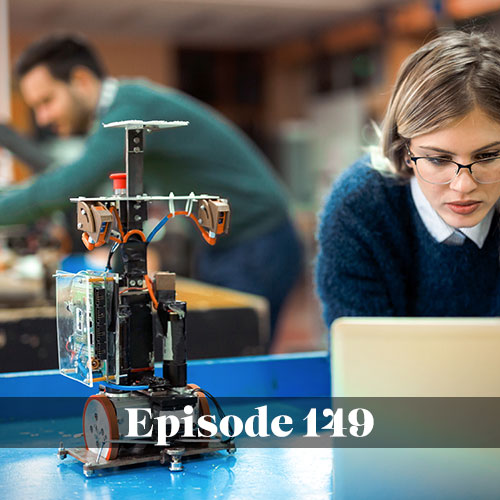Today’s show is about technology and 1:1 initiatives in public schools. Technology can be a great equalizer for students, but understanding all sides of implementation and daytoday use is crucial to the success of any 1:1 technology program. Our guest is Keith Pomeroy, the Chief Technology Officer at Upper Arlington Schools in Ohio where they have recently successfully launched a 1:1 initiative.
“…changing what is possible in the classroom.”
1:1
The power is that technology can be a game changer and level the playing field for all students. Learning extends beyond the school day, and better mimics real life. Access to the technology for the student and the teacher is crucial. 1:1 technology implementation has an upper hand in comparison to “Bring Your Own Device”, where we change the situation from variable access to constant and consistent access. Ultimately, while technology is a game changer, the teacher is the most important factor in student learning. Technology is a facilitator, a tool, and it does not replace the educator.
Launch
When you begin a 1:1 program or introduce any new technology to your student and family population, first impressions matter. Educating students, parents, and the community about the technology and what the technology is capable of is key to success. Preparing for that launch event and rollout of the technology lays the groundwork for how families and students actually use and interact with the technology. The launch creates an environment of learning, where questions are welcome, exploration is encouraged, and energy and excitement are high.
Personnel
When you launch a 1:1 initiative, you need people. People to plan, facilitate, communicate, volunteer, and work to educate your students and families. Utilizing your PTO or PTA to help round up volunteers to help plan, and get people to the right places. Secondary administrators are wonderful at facilitating large crowds, moving people from place to place, and keeping the peace. Students also love helping out for these types of events, facilitating adult volunteers and feeling a part of the roll out. Observing other districts while the roll out, or reaching out to ask them what they did is a great place to learn about what will work best for your district.
Preparation and Follow Through
Implementation of a 1:1 initiative takes a great deal of planning and preparation. Assessing your own infrastructure for wireless capabilities and tech help is essential, but additionally it is important to assess the needs your users (teachers and students) will have throughout the year. While many programs have tech staff in each school to troubleshoot any damage or operational issues, Upper Arlington also uses students to run a student help desk. It’s run by high school students, giving their own time and troubleshooting issues, true student initiated learning and exchange.
Education is at the center of the 1:1 Initiative
From the top down, education is paramount and the truest goal of a 1:1 initiative. Professional development for teachers is the first step to implementation. A piece of technology is merely a physical object. Through professional development, teachers can integrate the technology into their teaching, and use the devices and software to extend their reach beyond the classroom. Another key part of the training is to understand when not to use technology, where it is not necessary.
Next Steps
Continual professional development is necessary. We need to check in with educators to see where they are and continue to improve how we use devices. Meeting educators where they are with their own technological learning allows teachers to grow and differentiate their own learning. Applying the same principles we use with our students is just as important in our teaching of teachers. The process doesn’t end, but it is rewarding.
Follow Keith on Twitter @keith_pomeroy
Contact Keith Pomeroy: kpomeroy@uaschools.org






